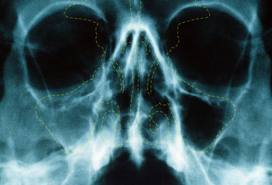The increase of use of chemotherapy and radiation in the treatment of laryngeal cancer has increased in the past two decades. The decline in surgery may affect the experience of performing surgeries in many centers and consequently the outcome and costs of the procedures. A study by Gourin and Frick sought to characterize the contemporary patterns of laryngeal cancer surgical care and the effect of volume status on surgical care and short-term outcomes.
Using the Nationwide Inpatient Sample database, the investigators evaluated the temporal trends in laryngeal cancer surgical care in 78,478 cases performed between 1993 to 2008. Relationships between volume and mortality, complications, length of stay, and costs were evaluated in 24,856 cases performed in 2003 to 2008 using regression analysis, with adjustment for patient and provider characteristics.
Laryngeal cancer surgery in 2001 to 2008 was done more often in high-volume hospitals. The author noted also s significant decrease in partial and total laryngectomy procedures, an increase in flap reconstruction, prior radiation, comorbidity, and wound complications, compared to 1993 to 2000. High-volume hospitals and high volume surgeons were significantly associated with more partial laryngectomy and flap reconstruction. The length of hospitalization and cost of hospitalization were both lower at a high-volume hospital.
These data reflect changing trends in the primary management of laryngeal cancer, with meaningful differences in the type of surgical care provided by high-volume providers. It also illustrates a shorter hospitalization time in hospitals that perform more laryngeal surgeries.
Using the Nationwide Inpatient Sample database, the investigators evaluated the temporal trends in laryngeal cancer surgical care in 78,478 cases performed between 1993 to 2008. Relationships between volume and mortality, complications, length of stay, and costs were evaluated in 24,856 cases performed in 2003 to 2008 using regression analysis, with adjustment for patient and provider characteristics.
Laryngeal cancer surgery in 2001 to 2008 was done more often in high-volume hospitals. The author noted also s significant decrease in partial and total laryngectomy procedures, an increase in flap reconstruction, prior radiation, comorbidity, and wound complications, compared to 1993 to 2000. High-volume hospitals and high volume surgeons were significantly associated with more partial laryngectomy and flap reconstruction. The length of hospitalization and cost of hospitalization were both lower at a high-volume hospital.
These data reflect changing trends in the primary management of laryngeal cancer, with meaningful differences in the type of surgical care provided by high-volume providers. It also illustrates a shorter hospitalization time in hospitals that perform more laryngeal surgeries.





























